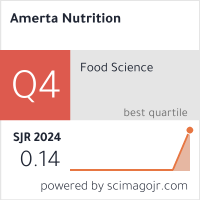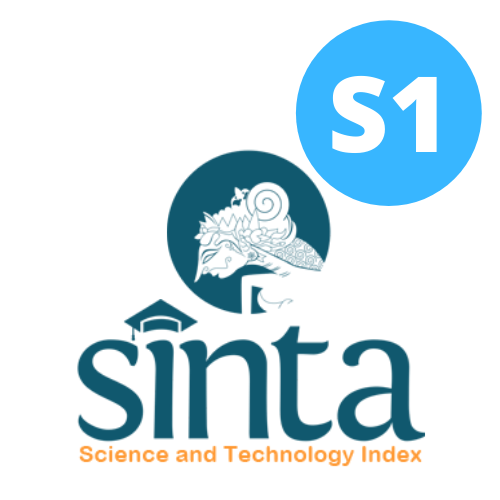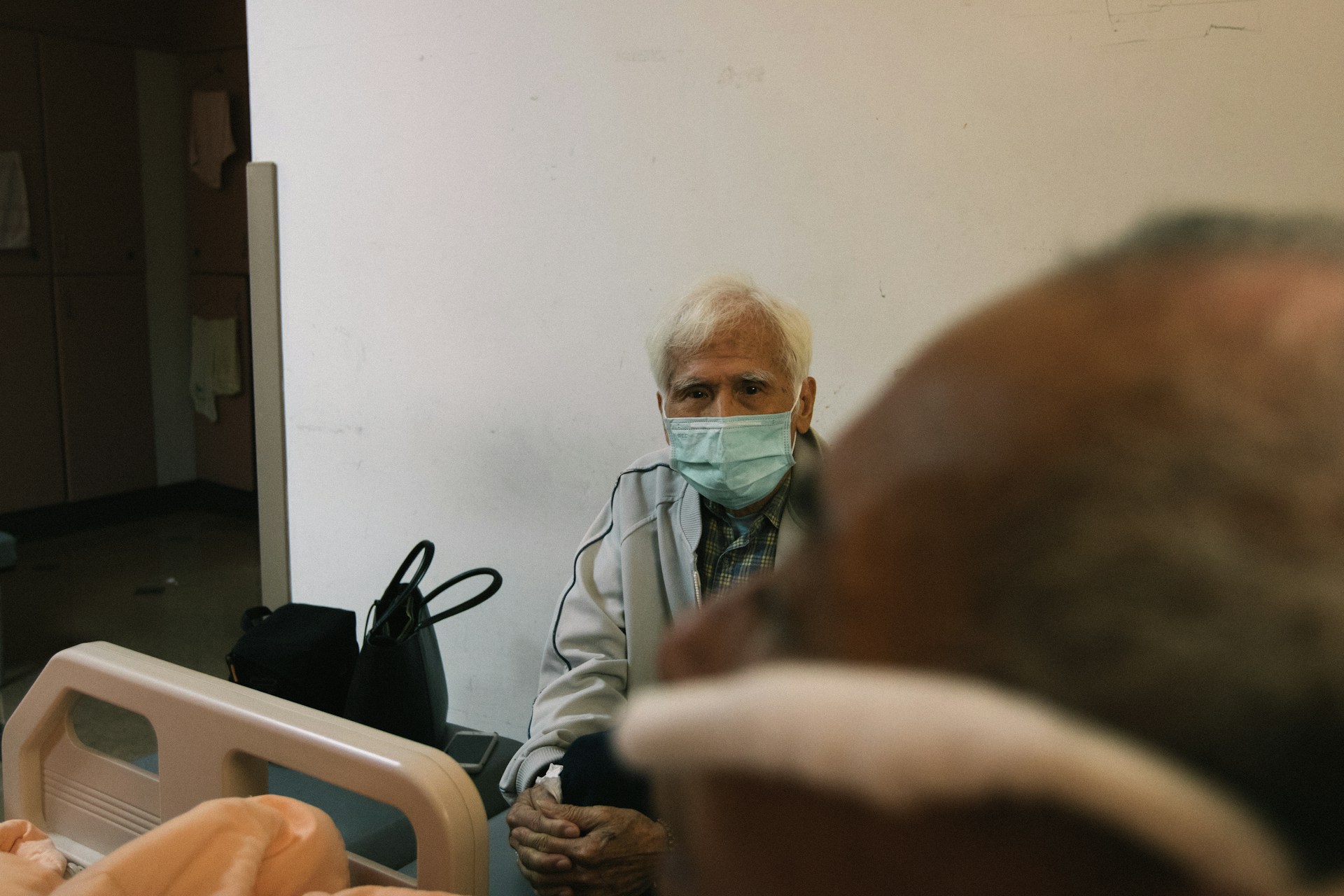Correlation of Sleep Quality and Diet Quality with Hemoglobin Levels in Adolescent Girls
Korelasi Kualitas Tidur dan Kualitas Diet dengan Kadar Hemoglobin pada Remaja Putri

Background: Iron deficiency is a common health issue among adolescent girls, mainly due to poor eating habits and inadequate sleep. The prevalence of anemia in this group remains high, ranging from 40% to 88%.
Objectives: This study aimed to examine the relationship between nutritional intake, diet quality, and sleep quality with hemoglobin levels among adolescent girls.
Methods: A cross-sectional study was conducted with 80 adolescent girls aged 15–19 years, selected from a population of approximately 230 adolescent girls in Ponorogo. Hemoglobin levels were measured using the Easy Touch GCHB instrument via capillary blood sampling. Sleep quality was assessed using the Pittsburgh Sleep Quality Index (PSQI). Nutritional intake was evaluated using the Semi-Quantitative Food Frequency Questionnaire (SQ-FFQ), and diet quality was measured with the Diet Quality Index (DQI). Multinomial logistic regression analyzed the relationships between nutritional intake, sleep quality, and hemoglobin levels.
Results: The study found that 50% of participants had normal hemoglobin levels, 42.5% had mild anemia, and 7.5% had moderate anemia. The mean hemoglobin level was 13.8, the average diet quality score was 57.47, and the mean sleep quality score was 7.33. Poor nutritional intake increased the risk of mild anemia by 20.32 times (OR=20.320, 95%CI=3.12-41.55, p-value=0.004). Moderate sleep quality increased the risk of mild anemia by 22.93 times (OR=22.932, 95%CI=2.91-182.55, p-value=0.013).
Conclusions: Interventions to improve nutritional intake and sleep quality are essential for adolescent girls, as these factors are strongly associated with iron deficiency in this group.
World Health Organization. Anaemia in Women and Children. at https://www.who.int/data/gho/data/themes/topics/anaemia_in_women_and_children (2024).
Ramos, A. R., Wheaton, A. G. & Johnson, D. A. Sleep Deprivation, Sleep Disorders, and Chronic Disease. Prev. Chronic Dis. 20, E77 doi: http://Dx.Doi.Org/10.5888/Pcd20.230197 (2023).
Baglioni, C. et al. Sleep and Mental Disorders: A Meta-Analysis of Polysomnographic Research. Psychol. Bull. 142, 969 (2016) doi: https://doi.org/10.1037/bul0000053.
Neumann, S. N. et al. Anemia and Insomnia: A Cross-Sectional Study and Meta-Analysis. Chin. Med. J. (Engl). 134, 675–681 (2021) doi: 10.1097/CM9.0000000000001306.
Schreck, K. A. Sleep Quantity and Quality as Predictors of Behavior and Mental Health Issues for Children and Adolescents with Autism. Res. Autism Spectr. Disord. 84, 101767 (2021) doi: https://doi.org/10.1016/j.rasd.2021.101767.
Duan, D., Kim, L. J., Jun, J. C. & Polotsky, V. Y. Connecting Insufficient Sleep and Insomnia with Metabolic Dysfunction. Ann. N. Y. Acad. Sci. 1519, 94–117 (2023) doi: https://doi.org/10.1111/nyas.14926.
Li, H. et al. Association of Cigarette Smoking with Sleep Disturbance and Neurotransmitters in Cerebrospinal Fluid. Nat. Sci. Sleep 801–808 (2020) doi: https://doi.org/10.2147/NSS.S272883.
Izzara, W. A., Yulastri, A., Erianti, Z., Putri, M. Y. & Yuliana. Penyebab, Pencegahan dan Penanggulangan Anemia pada Remaja Putri (Studi Literatur). J. Multidisiplin West Sci. 2, 1051–1065 (2023) doi: 10.58812/jmws.v2i12.817.
Shoemaker, M. E., Gillen, Z. M., McKay, B. D., Koehler, K. & Cramer, J. T. High Prevalence of Poor Iron Status Among 8- to 16-Year-Old Youth Athletes: Interactions Among Biomarkers of Iron, Dietary Intakes, and Biological Maturity. J. Am. Coll. Nutr. 39, 2–7 (2020) doi: 10.1080/07315724.2019.1621229.
Khanal, A., Paudel, R., Wagle, C. N., Subedee, S. & Pradhan, P. M. S. Prevalence of Anemia and its Associated Factors Among Adolescent Girls on Weekly Iron Folic Acid Supplementation (WIFAS) Implemented and Non-Implemented Schools at Tokha Municipality, Kathmandu. PLOS Glob. Public Heal. 4, 1–15 (2024) doi: 10.1371/journal.pgph.0002515.
Downs, Bernard W and Corbier, Jean-Ronel and Speight, Neal and Kushner, Steve and Aloisio, Ted and Bagchi, Manashi and Bagchi, D. Anemia: influence of dietary fat, sugar, and salt on hemoglobin and blood health. Diet. Sugar, Salt Fat Hum. Heal. 103–127 (2020) doi:https://doi.org/10.1016/B978-0-12-816918-6.00005-6.
Wolker, M. Why We Sleep: The New Science of Sleep and Dreams. (Scribner, New York, 2017) https://doi.org/10.1177/017084061983194.
Haematology, T. L. Tackling the Enormous Global Burden of Anaemia. Lancet Haematol. 10, e695 (2023) doi: 10.1016/S2352-3026(23)00211-9 .
WHO. Globally, it is estimated that 40% of all children aged 6–59 months, 37% of pregnant women and 30% of women ... Anaemia-World Health Organization (WHO) https://www.who.int/news-room/fact-sheets/detail/ANAEMIA (2025) .
Riskesdas. Laporan Riskesdas 2018 Kementrian Kesehatan Republik Indonesia. Lap. Nas. Riskesdas 2018 53, 154–165 (2018) url: https://repository.badankebijakan.kemkes.go.id/id/eprint/3514.
Indah, A. A. Hubungan pola tidur terhadap kejadian anemia pada remaja putri sma di kabupaten bantul. (Universitas Alma Ata Yogyakarta, 2017) url: http://elibrary.almaata.ac.id/id/eprint/881.
Samson, K. L. I., Fischer, J. A. J. & Roche, M. L. Iron Status, Anemia, and Iron Interventions and Their Associations with Cognitive and Academic Performance in Adolescents: A Systematic Review. Nutrients 14, 2–35 (2022) doi: https://doi.org/10.3390/nu14010224.
Sousa, R. da S., Bragança, M. L. B. M., de Oliveira, B. R., Coelho, C. C. N. da S. & da Silva, A. A. M. Association Between The Degree of Processing of Consumed Foods and Sleep Quality in Adolescents. Nutrients 12, 1–12 (2020) doi: https://doi.org/10.3390/nu14010224.
McWilliams, S. et al. Iron Deficiency and Sleep/Wake Behaviors: A Scoping Review of Clinical Practice Guidelines—How to Overcome the Current Conundrum? Nutrients 16, 2–42 (2024) doi:https://doi.org/10.3390/nu16152559.
Afif Arifah, D., Dwi Andarini, Y. & Dianita, R. Occupational Fatigue Based on Work Shift Among Medical Workers at Harjono S Hospital. J. Ilmu Kesehat. Masy. 10, 199–206 (2019) doi: https://doi.org/10.26553/jikm.2019.10.3.199-206.
Mulyani, N. S. & Sadrina, C. N. Asupan Protein, Zat Besi, dan Vitamin C dengan Kejadian Anemia pada Mahasiswi Gizi Poltekkes Kemenkes Aceh. J. Gizido 13, 33–41 (2021) doi:https://doi.org/10.47718/gizi.v13i1%20Mei.1177.
Novrita, S., Puspitasari, I., Yasin, N. M. & Wardhani, C. Pengaruh Konseling Apoteker Terhadap Outcome Anemia Pada Siswi SMA Yang Menerima Program Suplementasi Zat Besi. Maj. Farm. 18, 179–186 (2020) doi: https://doi.org/10.22146/farmaseutik.v1i1.60555.
Buysse, D. J., Reynolds, C. F., Monk, T. H., Berman, S. R. & Kupfer, D. J. The Pittsburgh Sleep Quality Index: A new instrument for psychiatric practice and research. Psychiatry Res. 2, (1989) doi:https://doi.org/10.1016/0165-1781(89)90047-4.
Block, G. Semiquantitative Food Frequency Questionnaire. Unpubl. copyrighted Quest. Berkeley, CA Block Diet. Data Syst. (1995) doi:10.3390/nu14132696.
Alfiah, E., Yusuf, A. M. & Puspa, A. R. Status Anemia dan Skor Diet Quality Index (DQI) pada Remaja Putri di SMP Ibnu Aqil, Bogor. J. Al-Azhar Indones. Seri Sains Dan Teknol. 6, 16–22 (2021) doi:10.36722/sst.v%vi%i.467.
Carvalho, K. M. B. de, Dutra, E. S., Pizato, N., Gruezo, N. D. & Ito, M. K. Diet quality assessment indexes TT - Índices de avaliação da qualidade da dieta. Rev. nutr 27, 605–617 (2014) doi:https://doi.org/10.1590/1415-52732014000500009.
Ayuningtyas, I. N., Tsani, A. F. A., Candra, A. & Dieny, F. F. Analisis Asupan Zat Besi Heme Dan Non Heme, Vitamin B12 Dan Folat Serta Asupan Enhancer Dan Inhibitor Zat Besi Berdasarkan Status Anemia Pada Santriwati. J. Nutr. Coll. 11, 171–181 (2022) doi: https://doi.org/10.14710/jnc.v11i2.32197.
Sutaryono, S., Handayani, S., Supardi, S., Pramono, C. & Ningsih, R. K. Boosting Hemoglobin: The Potent Impact of Erythropoietin Administration. in International Conference of Advancements in Nursing Care vol. 1 (2024) url: https://journal.unimma.ac.id/index.php/ADNURS/article/view/11936/5228.
Kumar S, Arnipalli S, Mehta P, Carrau S & Ziouzenkova O. Iron Deficiency Anemia: Efficacy and Limitations of Nutritional and Comprehensive Mitigation Strategies. Nutrients 14, 2–20 (2022) doi: https://doi.org/10.3390/nu14142976.
Wiafe, M. A., Apprey, C. & Annan, R. A. Patterns of Dietary Iron Intake, Iron Status, and Predictors of Haemoglobin Levels among Early Adolescents in a Rural Ghanaian District. J. Nutr. Metab. 2020, 1–10 (2020) doi: https://doi.org/10.1155/2020/3183281.
Chaudhary, P. & Gupta, R. Effectiveness of Nutritional Intervention on Food and Nutrient Intake and Hemoglobin Level of Moderately Anemic Adolescent Girls. Indian J. Ecol. 46, 943–948 (2019) doi: https://www.cabidigitallibrary.org/doi/full/10.5555/20203011440.
Kumar, S. B., Arnipalli, S. R., Mehta, P., Carrau, S. & Ziouzenkova, O. Iron Deficiency Anemia: Efficacy and Limitations of Nutritional and Comprehensive Mitigation Strategies. Nutrients 14, 2976 (2022) doi: https://doi.org/10.3390/nu14142976.
Sunuwar, D. R. et al. Effect of Nutrition Education on Hemoglobin level in pregnant Women: A quasi-experimental Study. PLoS One 14, 1–12 (2019) doi: https://doi.org/10.1371/journal.pone.0213982.
da Silva Lopes, K. et al. Nutrition-Specific Interventions for Preventing and Controlling Anaemia Throughout The Life Cycle: an Cverview of Systematic Reviews. Cochrane Database Syst. Rev. 2021, (2021) doi: https://doi.org/10.1002/14651858.CD013092.pub2.
Alaliwi, H. A. et al. Nutritional Anemia Types and Management. Egypt. J. Hosp. Med. 31, 906–911 (2018) doi: 10.12816/0044326.
Siri-Tarino, P. W., Sun, Q., Hu, F. B. & Krauss, R. M. Saturated Fat, Carbohydrate, and Cardiovascular Disease. Am. J. Clin. Nutr. 91, (2010) doi: https://doi.org/10.3945/ajcn.2008.26285.
Hur, S., Oh, B., Kim, H. & Kwon, O. Associations of Diet Quality and Sleep Quality with Obesity. Nutrients 13, 1–9 (2021) doi: https://doi.org/10.3390/nu13093181.
Hussein, N. A. & Ouda, M. M. A. Life Style Risk Factors of Iron Deficiency Anemia among Adolescents’ Girls. Int. J. Nurs. Didact. 8, 18–28 (2018) doi: https://doi.org/10.15520/ijnd.v8i10.2326.
Paramastri, R. et al. Association Between Dietary Pattern, Lifestyle, Anthropometric Status, and Anemia-related Biomarkers among Adults: a Population-Based Study from 2001 to 2015. Int. J. Environ. Res. Public Health 18, 2–15 (2021) doi: https://doi.org/10.3390/ijerph18073438.
Cheng, E. T. W. et al. Ferritin Is a Potential Marker of Cardiometabolic Risk in Adolescents and Young Adults with Sleep-Disordered Breathing. Sleep Adv. 5, zpae048 (2024) doi: https://doi.org/10.1093/sleepadvances/zpae048.
Yusufu, I. et al. Factors Associated with Anemia Among School-Going Adolescents Aged 10–17 Years in Zanzibar, Tanzania: A Cross-Sectional Study. BMC Public Health 23, 1814 (2023) doi: https://doi.org/10.1186/s12889-023-16611-w.
Chun, M.-Y., Kim, J. & Kang, J.-S. Relationship Between Self-Reported Sleep Duration and Risk of Anemia: Data from the Korea National Health and Nutrition Examination Survey 2016–2017. Int. J. Environ. Res. Public Health 18, 4721 (2021) doi: https://doi.org/10.3390/ijerph18094721.
McWilliams, S. et al. Iron Deficiency and Sleep/Wake Behaviors: A Scoping Review of Clinical Practice Guidelines—How to Overcome the Current Conundrum? Nutrients 16, 2559 (2024) doi: https://doi.org/10.3390/nu16152559.
Chun, M.-Y., Kim, J. & Kang, J.-S. Relationship Between Self-Reported Sleep Duration and Risk of Anemia: Data from The Korea National Health and Nutrition Examination Survey 2016--2017. Int. J. Environ. Res. Public Health 18, 2–11 (2021) doi: https://doi.org/10.3390/ijerph18094721.
Leung, W., Singh, I., McWilliams, S., Stockler, S. & Ipsiroglu, O. S. Iron Deficiency and Sleep – A Scoping Review. Sleep Med. Rev. 51, 1–12 (2020) doi: https://doi.org/10.1016/j.smrv.2020.101274.
Liu, X. et al. Night Sleep Duration and Risk of Incident Anemia in a Chinese Population: A Prospective Cohort Study. Sci. Rep. 8, 1–8 (2018) doi: https://doi.org/10.1038/s41598-018-22407-5.
Levitt, H. M. Qualitative Generalization, not to the Population but to The Phenomenon: Reconceptualizing Variation in Qualitative Research. Qual. Psychol. 8, 95–110 (2021) doi: https://psycnet.apa.org/doi/10.1037/qup0000184.
Sykes, B. L., Verma, A. & Hancock, B. H. Aligning Sampling and Case Selection in Quantitative-Qualitative Research Designs: Establishing Generalizability Limits in Mixed-Method Studies. Ethnography 19, 1–27 (2018) doi: https://doi.org/10.1177/1466138117725341.
Maier, C., Thatcher, J. B., Grover, V. & Dwivedi, Y. K. Cross-Sectional Research: A Critical Perspective, Use Cases, and Recommendations for IS Research. Int. J. Inf. Manage. 70, (2023) doi: https://doi.org/10.1016/j.ijinfomgt.2023.102625.
Andreeva, V. A. et al. Comparison of Dietary Intakes between a Large Online Cohort Study (Etude NutriNet-Sant) and a Nationally Representative Cross-Sectional Study (Etude Nationale Nutrition Sant) in France: Addressing the Issue of Generalizability in E-Epidemiology. Am. J. Epidemiol. 184, 660–669 (2016) doi: https://doi.org/10.1093/aje/kww016.
Copyright (c) 2025 Amerta Nutrition

This work is licensed under a Creative Commons Attribution-ShareAlike 4.0 International License.
AMERTA NUTR by Unair is licensed under a Creative Commons Attribution-ShareAlike 4.0 International License.
1. The journal allows the author to hold the copyright of the article without restrictions.
2. The journal allows the author(s) to retain publishing rights without restrictions
3. The legal formal aspect of journal publication accessibility refers to Creative Commons Attribution Share-Alike (CC BY-SA).
4. The Creative Commons Attribution Share-Alike (CC BY-SA) license allows re-distribution and re-use of a licensed work on the conditions that the creator is appropriately credited and that any derivative work is made available under "the same, similar or a compatible license”. Other than the conditions mentioned above, the editorial board is not responsible for copyright violation.












































